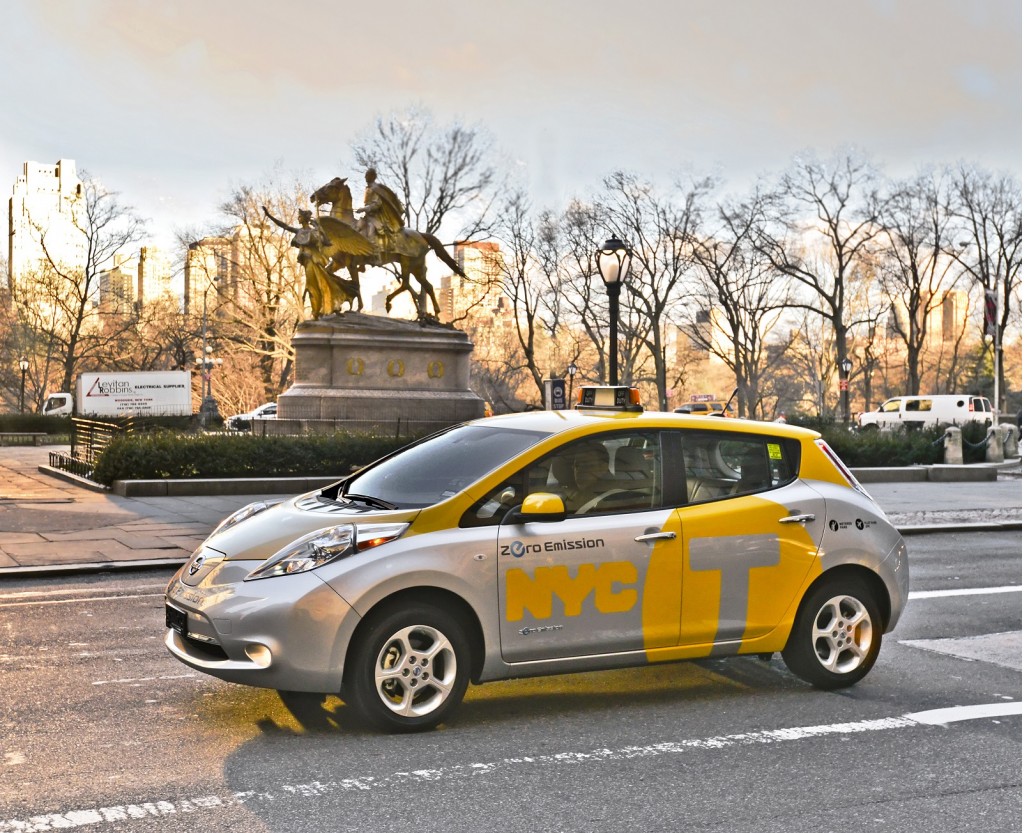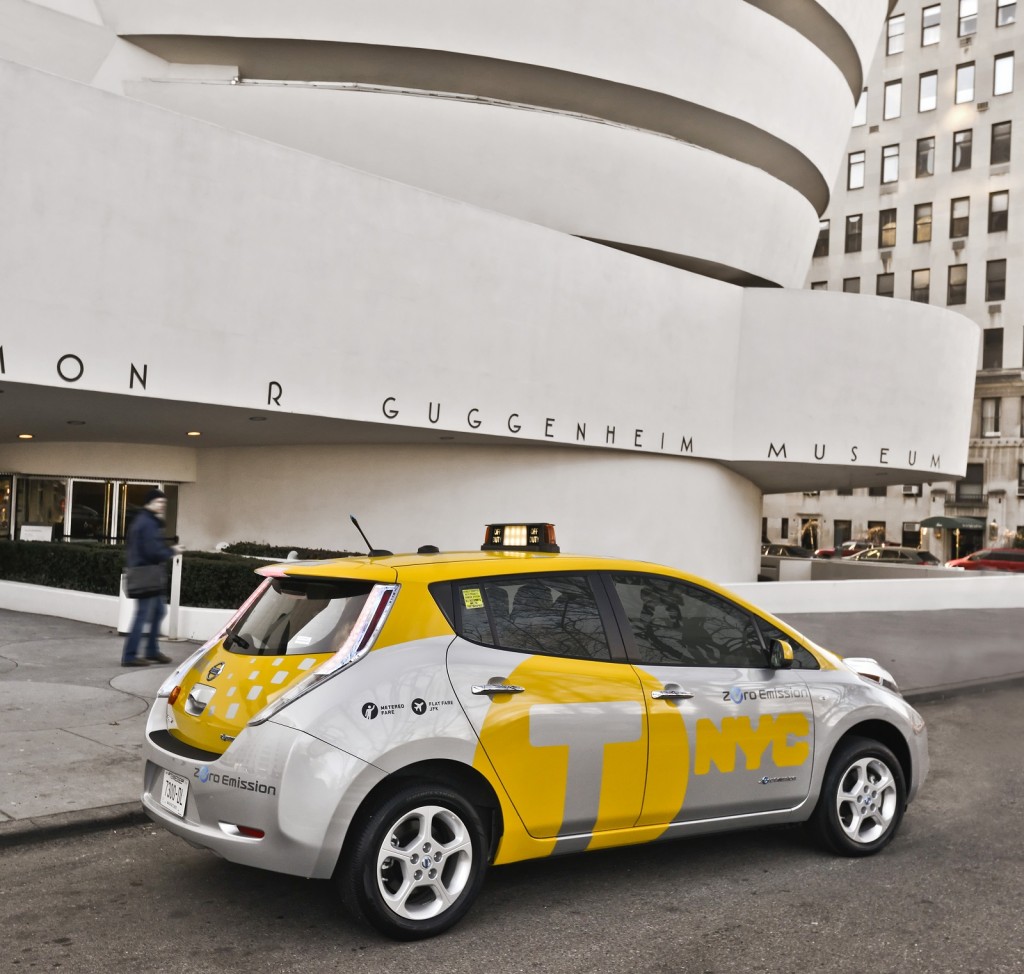Some Manhattan elected officials are calling for EVs to get a break on congestion pricing when it goes into effect in 2024, reports Streetsblog New York City.
New York City is poised to become the first U.S. city to implement congestion pricing, levying extra tolls on vehicles traveling into the central borough of Manhattan under a program officially known as the Central Business District Tolling Program.

2013 Nissan Leaf electric car tested as taxi in New York City, April 2013
In a letter to the Traffic Mobility Review Board, which recommends toll prices and exemptions to New York City’s Metropolitan Transportation Authority (MTA), a group of state lawmakers asked for discounts for EVs because they “do not contribute significantly to the smog and pollution of the Central Business District.”
Discounts, the amount of which weren’t specified, would follow a policy enacted by London. The British capital introduced congestion pricing in 2003, implemented steeper fees in 2019, and in the long run aims to make its central core entirely car-free.

2013 Nissan Leaf electric car tested as taxi in New York City, April 2013
In an interview with Streetsblog, Julie Tighe, president of the New York League of Conservation Voters, argued that the comparison to London was irrelevant. New York State aims to allow only EV sales after 2035, Tighe, noted, so eventually EVs will make up a large portion of the traffic New York City’s congestion pricing aims to reduce. Stockholm, which does have congestion pricing, once discounted EVs but phased out that policy.
While EVs do reduce emissions and local air pollution—especially in an area like Manhattan that sees internal combustion cars interminably idling at traffic lights—they don’t reduce traffic, which advocates argue is what congestion pricing is really about. Allowing more EVs also exacerbates the problem of where to charge them. Charging infrastructure is more limited in dense cities than in the suburbs.

